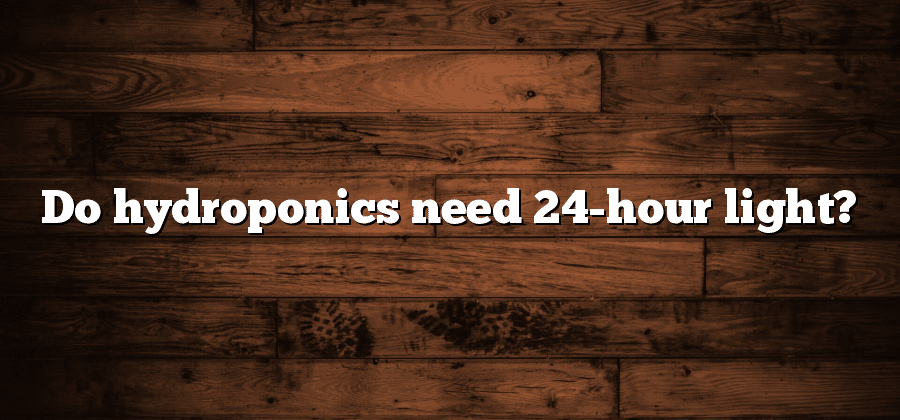Importance of Light in Hydroponics
The role of light in hydroponics cannot be understated. It is a critical factor that directly influences the growth and development of plants in a hydroponic system. Light is the primary source of energy for plants through the process of photosynthesis, where they convert light energy into chemical energy to fuel growth. Without a sufficient and appropriate amount of light, plants in a hydroponic system may struggle to thrive or even perish. Thus, understanding the importance of light and its influence on plant growth is essential for successful hydroponic gardening.
When it comes to hydroponics, light not only provides energy for plants but also affects their overall health and productivity. Different light wavelengths, such as red, blue, and green, play distinct roles in various stages of plant growth. For instance, blue light promotes vegetative growth and is crucial for leaf and stem development, while red light is vital for flowering and fruiting. By harnessing the power of different light wavelengths and providing the appropriate intensity and duration, hydroponic growers can manipulate plant growth, enhance yield, and improve the quality of their harvests. Consequently, understanding the significance of light and its effects on different plants is invaluable for optimizing hydroponic systems for maximum productivity.
Understanding Photoperiods and Plant Growth
Photoperiod refers to the duration of light and darkness that plants are exposed to during a 24-hour period. It plays a crucial role in the growth and development of plants in hydroponic systems. Understanding the impact of photoperiods on plant growth is essential for optimizing their cultivation in controlled environments.
Different plants have varying requirements when it comes to photoperiods. Some plants, known as long-day plants, require longer periods of light exposure to stimulate growth and flowering. On the other hand, short-day plants need shorter periods of light exposure to trigger flowering. There are also day-neutral plants that are not affected by the duration of light and darkness, and their growth is not dependent on specific photoperiods. By understanding these distinctions, hydroponic growers can manipulate the photoperiods to influence the growth, flowering, and overall health of their plants.
Optimal Light Duration for Hydroponic Systems
Light duration is a critical factor in the success of hydroponic systems. The amount of time plants are exposed to light directly affects their growth and productivity. In hydroponics, where plants rely solely on artificial light for their photosynthesis, finding the optimal duration for light exposure is crucial for maximizing yields.
Determining the ideal light duration for hydroponic systems can be a complex task. It depends on various factors such as the type of plants being cultivated, their growth phase, and the specific requirements of each species. Different plants have different light needs, and understanding these requirements is essential for providing the right conditions. Additionally, factors like temperature, humidity, and CO2 levels can also influence the optimal light duration for hydroponic systems. Achieving the perfect balance of light duration, along with other environmental variables, is key to creating an ideal growing environment for hydroponic plants.
Factors Influencing Light Requirements in Hydroponics
Factors Influencing Light Requirements in Hydroponics:
When it comes to hydroponic systems, providing the right amount of light is crucial for the growth and development of plants. However, understanding the factors that influence the light requirements in hydroponics is equally important.
The first factor to consider is the type of plants being grown. Different plants have different light requirements, with some thriving in full sunlight while others prefer partially shaded conditions. It is essential to research the specific light requirements of the plant species you are cultivating in order to provide them with the optimum light intensity and duration. Additionally, the stage of plant growth also plays a significant role in determining light requirements. Seedlings, for example, require less intense light compared to mature plants. Adjusting the light intensity and duration as the plants progress through different growth stages is essential for maximizing their overall productivity.
Matching Light Intensity to Plant Needs
Matching light intensity to plant needs is a critical aspect of successful hydroponic cultivation. Different plants have varying light requirements, and providing the right amount of light is essential for optimal growth and development. Light intensity refers to the amount of light that reaches the plant’s leaves, and it can significantly impact photosynthesis, flowering, and overall plant health.
One of the key factors in determining the appropriate light intensity is the stage of plant growth. Seedlings and young plants often require lower light intensities to prevent stress and encourage root development. As the plants mature and enter the vegetative or flowering stages, they usually require higher light intensities to support robust growth and maximum yield. Balancing the light intensity with the plants’ needs is crucial to ensure healthy and productive hydroponic systems.






